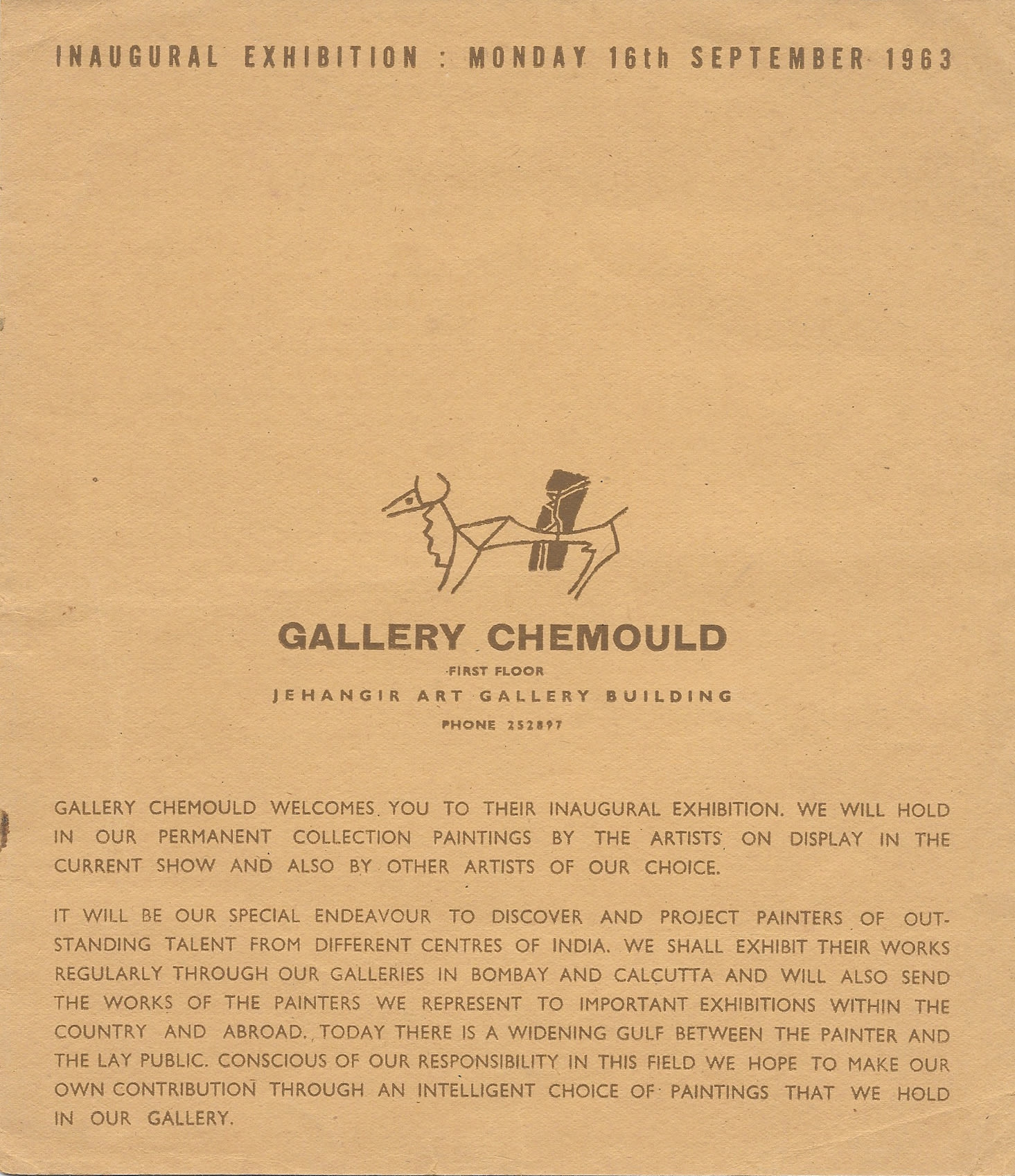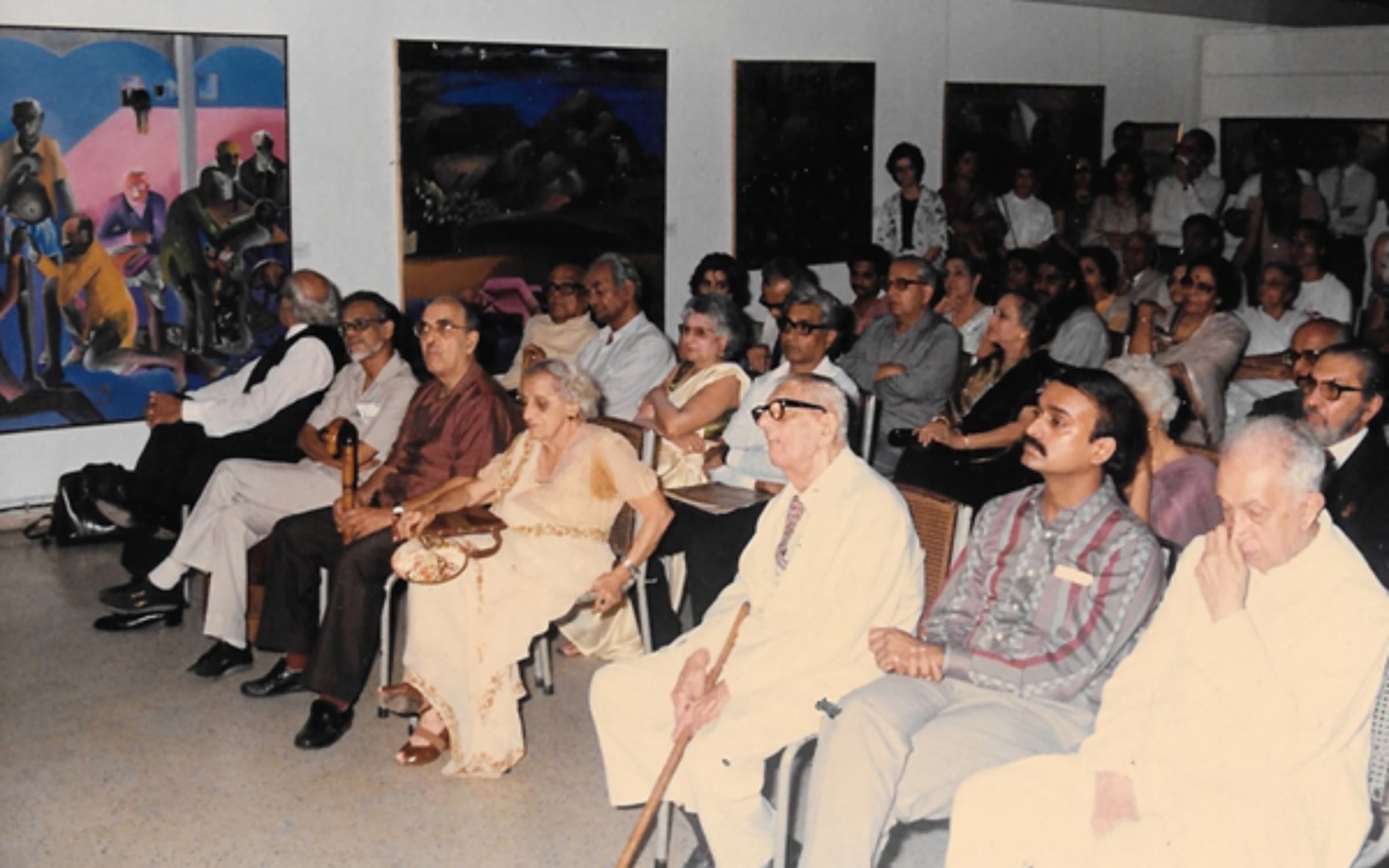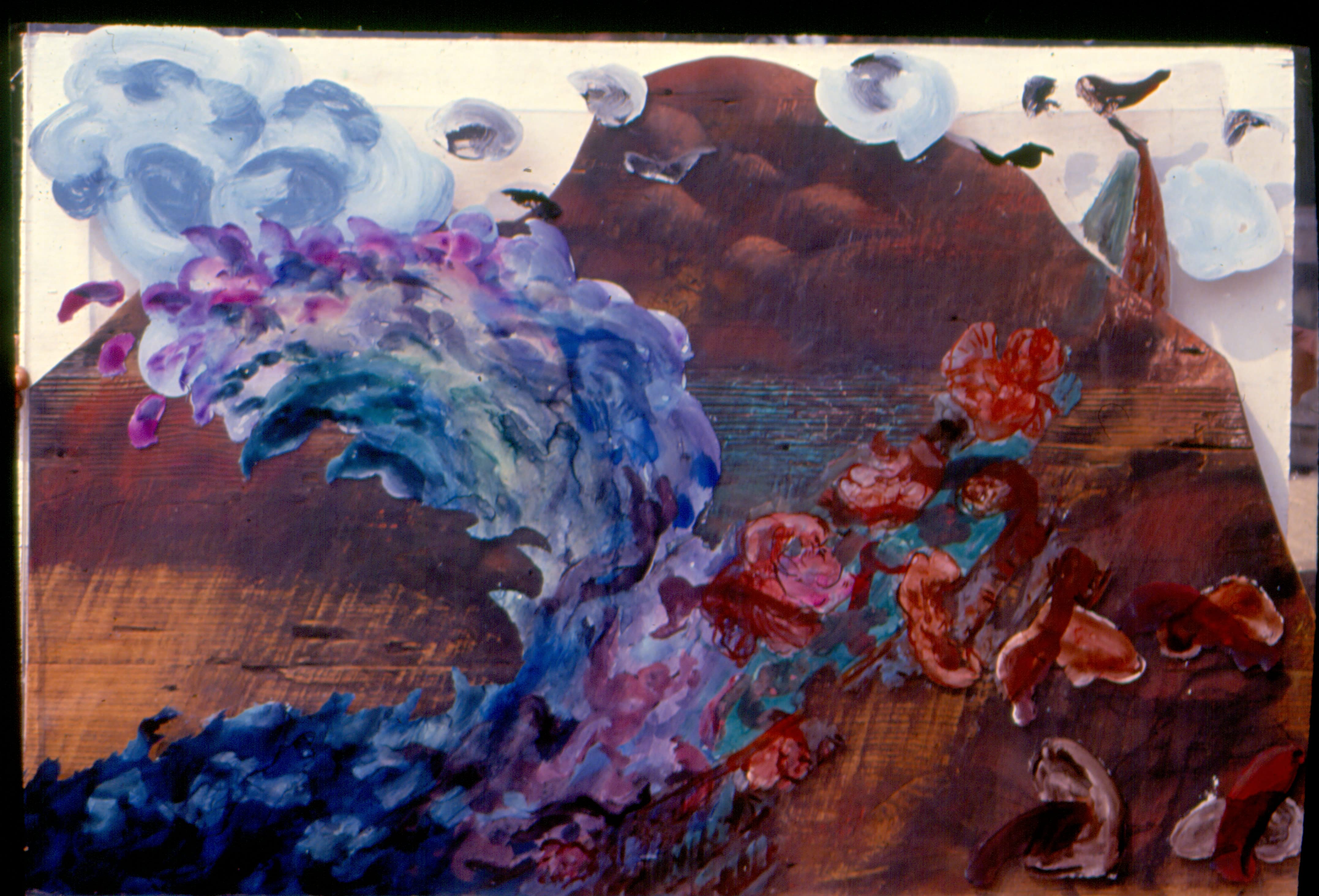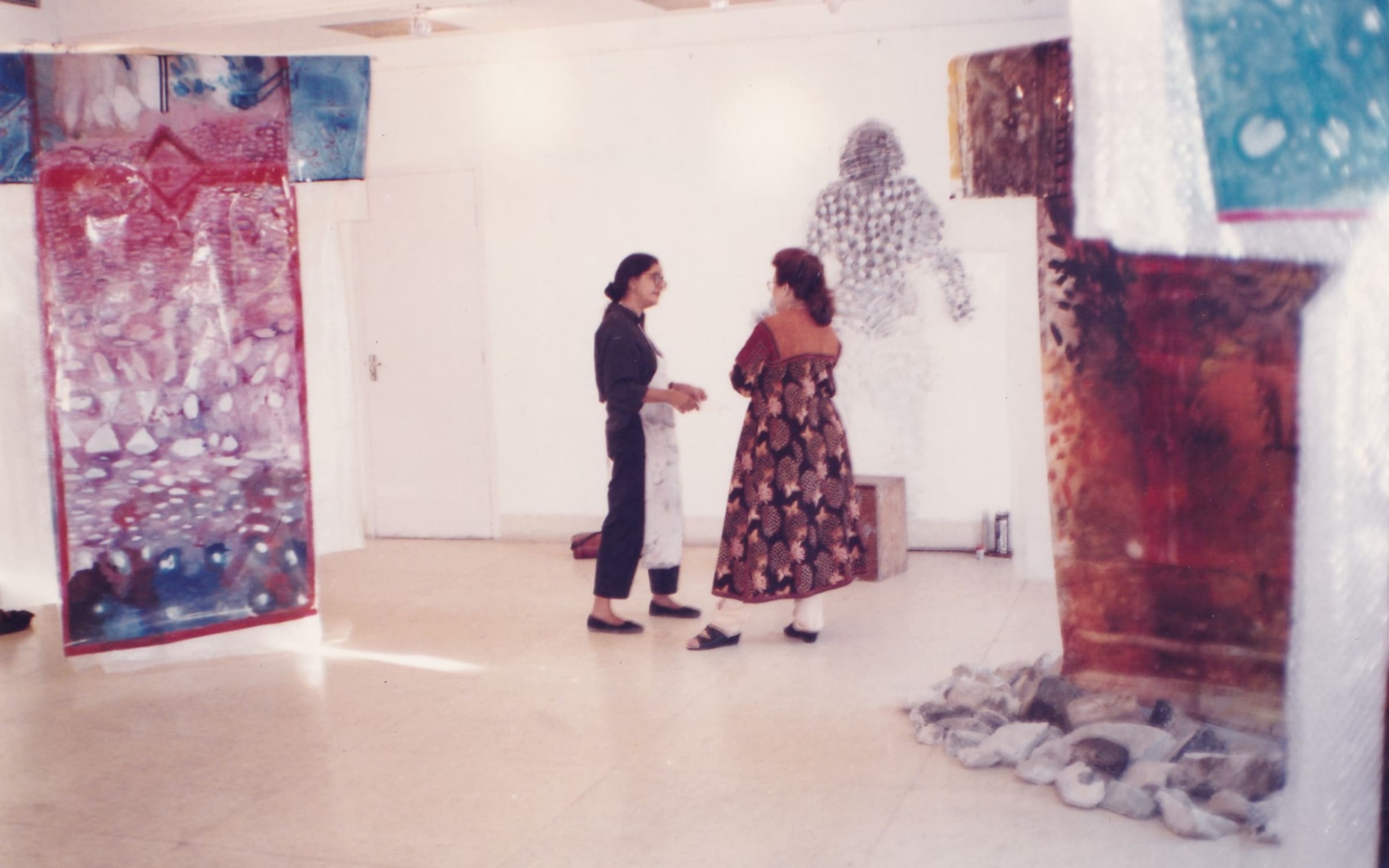Gallery Chemould opened in Bombay 60 years ago, in September 1963. Coming into existence at a time when opportunities for modern artists were scarce at best, it demonstrated a commitment to showcasing emerging artists and experimental work that instantly set it apart and turned it into a model for other galleries in India and beyond. Chemould’s humble beginnings belie its influence. In the late 1940s, its founder, Kekoo Gandhy, started a sideline to his framing business, Chemould Frames, and displayed the work of the Progressive Artists’ Group, including M.F. Husain, in the window of his shop. Over time, this became a more formal space in a room perched above the ground-floor galleries of the city’s public institution Jehangir Art Gallery.

It has not always been plain sailing. In the early days, avant-garde art was not readily accepted in India. F.N. Souza, for instance, had to relocate to London following a police investigation on the grounds of obscenity in his work. When Kekoo and Khorshed, his wife, opened their inaugural exhibition of 13 artists including N.S. Bendre, Himmat Shah, and Piraji Sagara, it was expressly meant to narrow ‘the gulf between the painter and the lay public.’ In Jerry Pinto’s book Citizen Gallery: The Gandhys of Chemould and the Birth of Modern Art in Bombay (2022) – which retraces the history of the gallery – the author writes that Chemould ‘became the training ground for the eyes of the city.’ It would not be an exaggeration to say that the gallery’s influence was soon felt across the country. Kiran Nadar, one of India’s most notable collectors and the founder of the Kiran Nadar Museum of Art, remembers one of the first artworks she purchased from Kekoo and Khorshed. ‘I was in my late twenties,’ she recounts. ‘I used to go with my aunt [to the original gallery space] and that’s when I met them. They tried to convince me to buy a Tyeb Mehta, but I was adamant about having a B. Prabha. And that’s what I bought.’

‘There was a personal approach, and an openness to share and teach,’ says Abhishek Poddar, founder of Bengaluru’s Museum of Art & Photography. ‘I first met Kekoo in 1988, when I was 20. He hosted a dinner in my honor with very established collectors and artists.’ Around that time Kekoo and Khorshed’s daughter, Shireen Gandhy – the gallery’s current owner – returned from her studies in London to begin working on her first show. ‘Seventeen Indian Painters’ was a celebration of the gallery’s 25-year anniversary and brought together S.H. Raza and Bhupen Khakhar, among others, with a young Atul Dodiya and Ranbir Singh Kaleka. ‘It was a moment when contemporary art was gaining traction – I came into a scene where there was a certain fervor with buyers coming in,’ Shireen recalls.
Shireen Gandhy’s arrival signaled a change, and artists were given a new impetus to experiment. Chemould’s show ‘Splash: Images on Glass’ (1990) featured a suite of collaborative paintings on acrylic sheets by Vivan Sundaram, Nalini Malani, and Khakhar. Born out of a mural commissioned by the collector Czaee Shah, the exhibition was characteristic of an increasingly well-financed art world alive with potential and operating in a city with an appetite for visual innovation.

Gandhy describes 1992 – when the demolition of the Babri mosque provoked deadly riots in Bombay – as the point at which contemporary art in India pivoted. ‘Artists felt like painting was not enough,’ she explains. ‘The politics of art became as important as the aesthetic.’ In the immediate aftermath of the sectarian violence, the gallery staged ‘City of Desires’, Nalini Malani’s first site-specific wall drawings, which responded to the sharpening of Hindu revivalism. For two weeks Malani operated an open studio and drew live on the walls atop a floor covered with a film of red terracotta dust that clung to visitors’ shoes.
In India’s economic boom of the 2000s, artists like Malani became the focus of a deepening international interest in its contemporary art. With Chemould’s artists flying all over the world for a slew of India-focused shows, such as ‘Capital & Karma’ (2002) at Kunsthalle Wien, ‘Edge of Desire’ (2005) at the Queens Museum, New York, and ‘Horn Please’ (2007) at Kunstmuseum Bern, as well as increased gallery competition in Mumbai, Chemould outgrew its original site. ‘We all felt we needed bigger space and more distance from the viewer and the walls,’ Dodiya recalls. In 2007, his solo exhibition ‘Shri Khakhar Prasanna’, a multi-installation tribute to Bhupen Khakhar, who had died four years earlier, balanced the gallery’s legacy with its rebrand to Chemould Prescott Road as it took up a new spacious location in the city’s Fort area.

‘The move was a big jump, as was international fair participation,’ says the curator Shaleen Wadhwana, who has spent the past year sifting through the gallery’s archives to inform the ongoing two-part exhibition, ‘CheMoulding: Framing Future Archives’, which reflects on the gallery’s 60 years. The artists now had five times more space to play with and the gallery had completed its journey from what Gandhy describes as a ‘mom and pop shop’ into a sizable and globally recognized enterprise, which now encompasses the summer residency program Chemould CoLab, co-run by Gandhy’s daughter, Atyaan Jungalwala, since 2022. ‘She’s learned from me not to pander,’ Gandhy says with a laugh, before admitting, ‘although my lack of boundaries with artists has, to a large extent, allowed me to do great shows.’
Dr. Cleo Roberts-Komireddi speaks and writes on contemporary art, often with a focus on art from South and Southeast Asia. She has written for the Financial Times, The Guardian, and The Times, among other publications, and is currently writing a book on Indian art for Yale University Press.
Published on December 12, 2023.
Captions for full-bleed images: Opening of Gallery Chemould at September 16, 1963. From left to right: K.K Hebber, Laxman Pai, Gal Arya (Architect), Siaxes Chandan Gaitonde, other members of the family and staff. Courtesy of Chemould Archives, Mumbai, India. (A dark filter has been applied over the image for readability)